With the broad selection of vinegars now available in grocery stores, the average home cook may feel overwhelmed, especially when a recipe calls for a particular type of vinegar that they are as of yet unfamiliar with.
With such vinegars like apple cider, red wine vinegar and even plain old vinegar being regularly used in a variety of dishes, it is important to be able to differentiate between the different types of this sour cooking ingredient in order to best utilize them in your recipes.
Rice vinegar is best used when a sweeter and milder vinegar is called for, though it will easily break down in the wrong cooking conditions. On the other hand, white vinegar is generally seen as the “standard” vinegar that is most commonly used in a variety of recipes.
What Does Rice Vinegar Taste like?
Rice vinegar originates from many countries located in Asia, and as such has a small difference in taste depending on the region it originates from. As rice vinegar, much like sake, is made from fermented rice grains, it is characterized by a sweet-sour and pungent flavor that compliments dishes like dressings and fried foods1.
Rice vinegar originating from the peninsula of China are said to have a stronger and more pungent taste than the more traditional Japanese rice vinegars. Chinese rice vinegar comes in many colors unlike the standard white Japanese version, and can be found in shades of black, brown and red. These are referred to as rice wine vinegar.
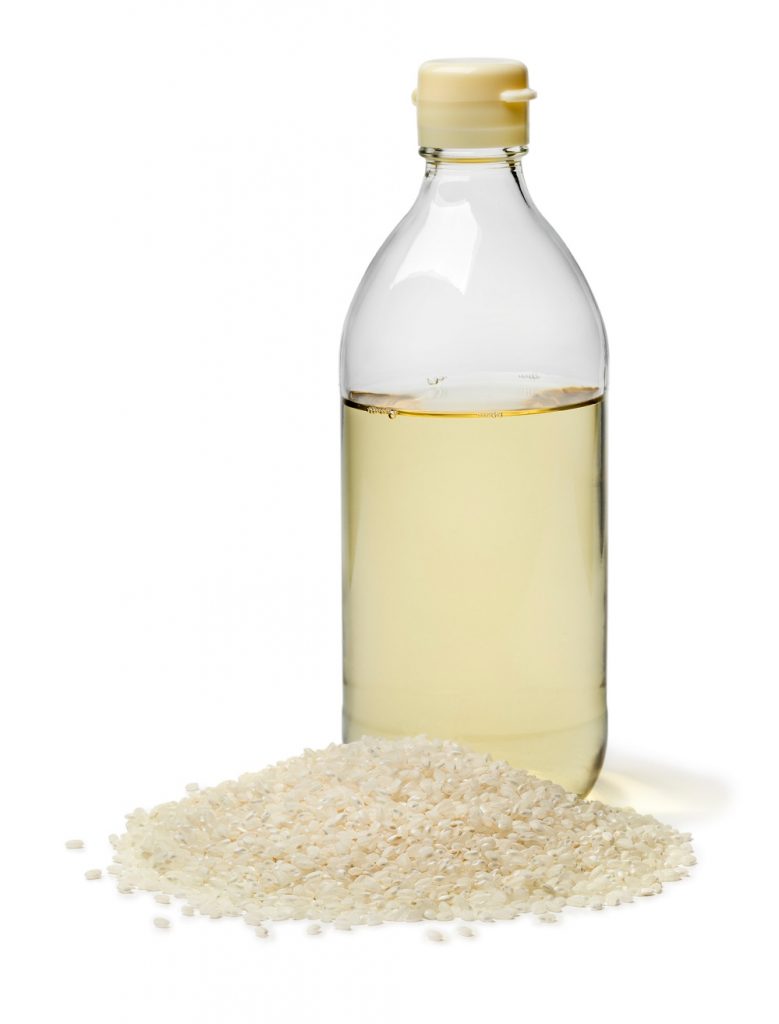
Unlike the sorts of vinegar that are produced in the western world, rice vinegar and rice wine vinegar is usually lower on the pH scale, and as such is considered a less acidic ingredient in the world of cooking.
On the other hand, rice vinegar produced or replicated in Japan is practically as mild and soft as it comes. Consisting of only up to 5% acetic acid by volume, Japanese vinegar often comes in completely transparent or slightly yellow shades.
Other varieties of rice vinegar such as the Korean glutinous rice vinegar or Vietnamese giấm bỗng vinegar present a stronger and more sour taste than their Japanese and Chinese counterparts, though they all share the same trait of being produced by fermented rice that is then strained for solids.
What does White Vinegar Taste like?
The term white vinegar can actually refer to a variety of different vinegars depending on the country. In the United States and Canada, the name white vinegar primarily means a distilled vinegar sourced from sugar cane or produced chemically through acetic acid dilution.
White vinegar has a far harsher and more sour taste than that of rice vinegar, especially the clear non-wine rice vinegar originating from Japan.
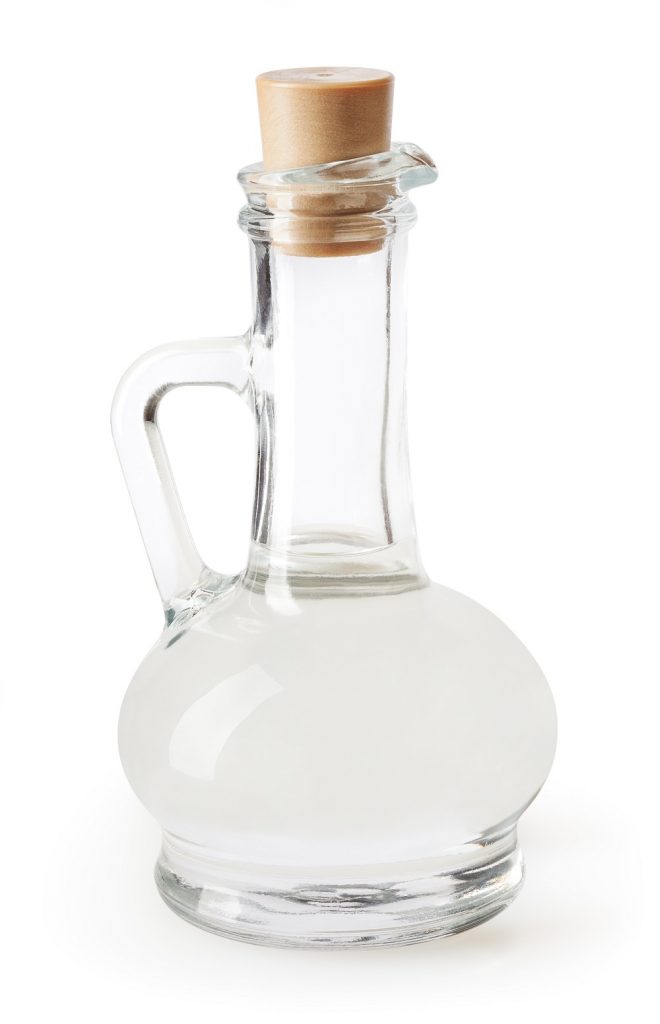
The particular flavor notes of vinegar, however, depend largely on the nature of their production. Vinegar that has been aged in the appropriate environment will have a far more mature and full-bodied taste than that of mass-produced lab-based white vinegar.
Vinegars that have been properly distilled and fermented in aged wood barrels are considered to be of better quality, as well as vinegar that has been diluted with purified water free of additives. Occasionally, white vinegar may be made of exotic malts and grains, producing uniquely flavored vinegars that are often used in specialty dishes or as unique sauces.
What are Rice and White Vinegar Made of?
Rice vinegar and white vinegar differ primarily because of the materials used when first producing them.
Rice vinegar, much like its namesake, uses various types of rice grains fermented in certain ways in order to produce its signature sweet-sour taste. Depending on the particular country of origin and the manufacturer, certain places and companies tend to favor glutinous rice or brown rice over the standard white rice.
White vinegar, on the other hand, is usually made from the conversion of certain types of plant sugar into both alcohol and then into acetic acid. This process, referred to as double fermentation, is otherwise not required if the acetic acid present in the vinegar is produced through other means such as through other chemical processes.
Most often, white vinegar is produced by fermenting barley malt, both to achieve its unique flavor and to reduce the cost of the starting materials as much as possible, further increasing profit margins for the production company3.
Despite the original materials both rice and white vinegar are made of, they both share the common trait of acetic acid making up a large portion of their chemical make-up, with white vinegar consisting of approximately 5 to 8% acetic acid while most formulations of rice vinegar would only have an approximate 5% maximum.
What is Rice Vinegar used for?
Rice vinegar, being sweeter and milder than white vinegar, is primarily used for sweetening of fried potato products, as an acidic ingredient in dressing and sauces, and is also used by itself as a dip for sushi and similar foods.
In particular, Japanese white rice vinegar is used in a sauce called seasoned rice vinegar or awasezu, which consists of salt, sugar and sake added to aged white rice vinegar in order to create traditional sushi rice.
What is White Vinegar used for?
White vinegar, being one of the most common types of vinegar in most of the world, is used for an absolutely massive variety of uses, and not only in the culinary sector.
At higher concentrations, the acetic acid in white vinegar can be used as a pesticide and anti-fungal topical ointment. In order to preserve foods that would otherwise spoil, many countries have resorted to pickling their food in times before refrigeration technology.
However, it is within the kitchen that white vinegar shines, as it can be used to cure and dry meats in order to both mature their flavor and preserve them outside of a refrigerator.
Apart from meats, white vinegar is also used in many baked dishes and cooked dishes as either a primary ingredient or to initiate a chemical reaction.
References
1. Parkinson, Rhonda. “Rice Vinegar – Chinese Seasonings”. About.com. Retrieved 17 May 2012.
2. DK Publishing (2010). “Oils, Vinegars, and Flavorings: Vinegars”. The Illustrated Cook’s Book of Ingredients. New York: DK Publishing. p. 516. ISBN 9780756667306.
3. Bateman, Michael (2 May 2016). “Bliss and vinegar – why malt makes a pretty pickle: It’s time for a revival of a very British condiment”. The Independent, Independent Digital News & Media, London, UK.

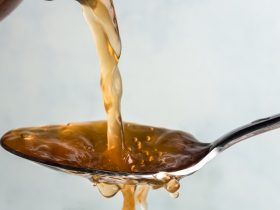

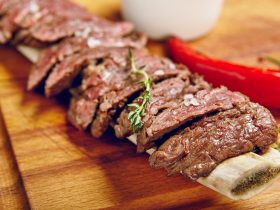
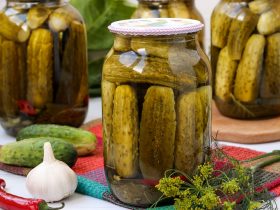
Hi, I'm Dom
Dom Eats was started to help other people fall in love with food. While cooking can feel intimidating, it doesn't have to be.